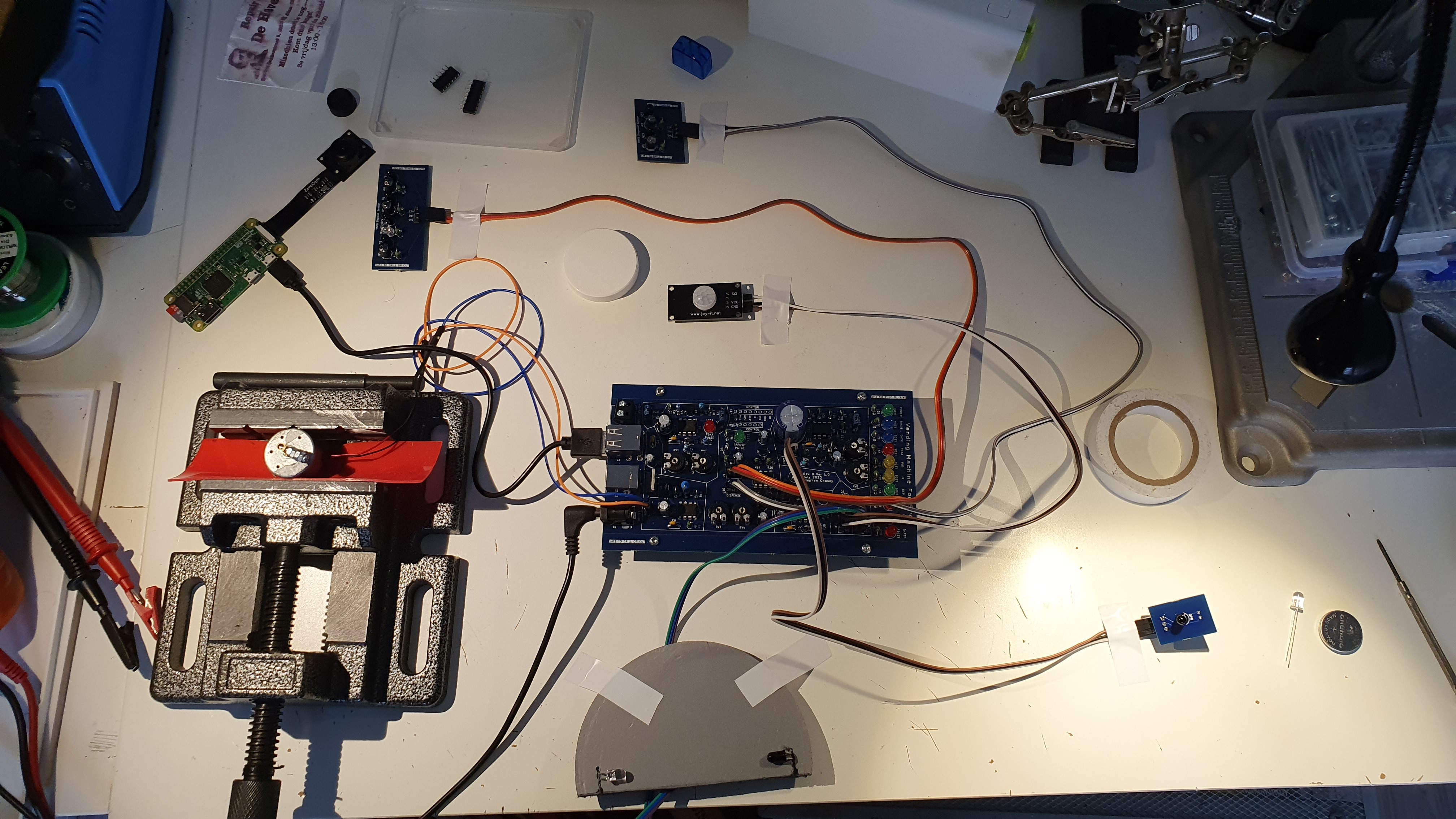A vending machine for birds that rewards them with food when they drop something in a hole. Electronics and enclosure materials cost <100 USD/EUR. I've designed a PCB and PVC pipe enclosure and dispenser (described below). The circuit is not complex, but I think a custom PCB makes it easier for people who are not electronics hobbyists to build this. I've made a few different enclosures out of scrap for this, but will share the PVC pipe enclosure details since it's sturdy, waterproof, and the materials can all be found at the hardware store.
There were two main inspirations for me to start and document this project
- Hans Forsberg - designed his own machine and was the first person I learned of that had birds (magpies) bringing items to deposit on thier own
- Josh Klein - makes his Crowbox designs freely available and supports people who want to build it
I would like to thank PCBWay for helping me get the PCB made.
MAIN FEATURES
- portable
- saves power until a warm body is present
- battery or mains powered
- one moving part
- accessible components and materials
- rodents can't break in and get the food
- cheap to build
- customizable
ELECTRONICS, SENSORS, AND POWER
The circuit is all analog, using four NE555 timers and one LM358 dual op amp. The sensors are all made using IR phototransistors and IR LEDs. The PCB has headers broken out so you can monitor and control it with a microcontroller or SBC. It runs on 5-6VDC and uses ~10mA in standby (~20mA if timer and powerbank keep-alive are enabled), ~250mA when IR LEDs are on and ~400mA when the dispenser motor is running. A 10,000 mAh USB powerbank should last about a week.
- Powerbank Keep-Alive: 555 sinks current every 7-22 seconds for 0.7-2.2 seconds to keep USB power banks on while sensors are in standby - the powerbank keep-alive can be disabled.
- IR LED ON/OFF: 555 keeps the IR LEDs used by the sensors on for 22 seconds after the last PIR trigger
- Op Amps: LM358 used as comparators to adjust the threshold of the sensors and send signals when they are triggered
- Motor Controller: 555 turns on the dispenser vibration motor when the deposit sensors are triggered, tuns it off when the dispense sensor is triggered
- Timed Dispense: 555 dispenses food every 10-100min - timed dispense can be disabled
- Daytimer: Phototransistor that puts the timer in reset while it's dark outside - brightness threshold can be adjusted or disabled (Rev. B)
- PIR Sensor: Sends a signal to turn on the sensor IR LEDs
- Deposit/Dispense Sensors: IR phototransistors and IR LEDs used as proximity sensors to monitor the deposit and dispense chutes
- Hopper Level Sensor: IR phototransistor and IR LED to detect when the food level gets low (Rev. B)
- Monitoring/Control: lines for monitoring and triggering events with an external controller (Rev. B)
PCB, BOM AND GERBERS
Kicad Files (Github): https://github.com/src1138/VMFB
Gerbers and PCB (PCBWay): https://www.pcbway.com/project/shareproject/Vending_Machine_for_Birds_eda585b3.html
Current Version is Rev. B Ver. 1.1.
PCB Front

PCB Back

I priced the BOM for an earlier version of the board, including the PIR and motor for the vibration dispenser at Mouser and it came to 33.82 EUR. Mouser is not the cheapest source, but they have a pretty good selection of parts.
https://cdn.hackaday.io/files/1847547904515136/Winkelwagentje_jul28_0317.xls
If you shop around just a bit you could get the BOM for ~25 EUR. If you are an electronics hobbyist you probably have most if not all the parts on-hand.
CRITICAL COMPONENTS
This project uses commodity components, and you can confidently use alternatives with similar specs. There are a few points to keep in mind.
- For the phototransistors, they should have a photocurrent of around 10mA. If they have a lower photocurrent, you should replace the 10K resistors on the non-inverting op amp imputs with a higher value. For instance, if your phototransistors have a photocurrent of ~1mA, use a 100K resistor intead.
- I use NE555Ps...
 Stephen Chasey
Stephen Chasey


















 Mike Turvey
Mike Turvey
 Jarrett
Jarrett

That project is best for birds.
https://www.pfmlogin.org/